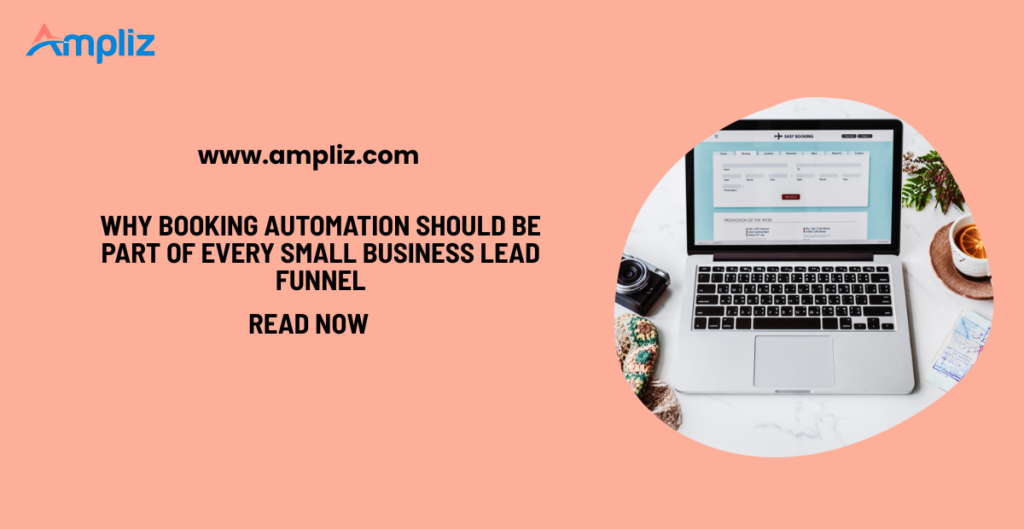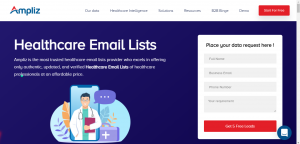Small businesses survive on efficiency. Every lead matters. Every interaction counts. Every missed appointment can mean lost revenue.
That’s why booking automation has become central to modern lead funnels. It isn’t just about convenience – it’s about survival and growth.
In the United States, small businesses face tight margins and fierce competition. Owners need tools that save time, cut friction, and keep leads moving.
This article explores appointment booking automation from every angle. You’ll see why it works, how to use it, and what mistakes to avoid.
We’ll also dive into:
- Benefits of online booking automation
- Data and stats proving its impact
- Future trends in booking systems
By the end, you’ll know why automation belongs at the heart of every funnel.
Appointment booking automation basics
A properly set appointment booking automation replaces manual scheduling with digital systems. Instead of endless back-and-forth messages, software handles the process.
Typical features include:
- Online booking forms;
- Automated confirmations;
- Calendar syncing;
- Payment integrations;
- Reminders through email or SMS;
It matters because:
- Customers get instant confirmation.
- Teams avoid wasted admin hours.
- Businesses project professionalism.
When booking becomes instant, customers feel valued. In the US market, where convenience drives loyalty, this matters a lot.
The old way: Why manual booking hurts funnels
Let’s compare.
Manual booking process:
- Prospect emails for availability;
- Business responds with options.
- Prospect replies with their choice.
- Business confirms manually.
- Appointment is logged in a calendar.
This can take hours or days. By then, the lead may have lost interest.
With automation:
- Prospect clicks a booking link;
- They select a time slot instantly.
- Confirmation is automatic.
No waiting. No friction. The funnel stays intact.
How online booking automation streamlines your sales funnel
Every funnel has multiple stages: awareness, interest, decision, and conversion. Online booking automation influences each stage.
- Awareness: Prospects see easy scheduling links on your site or ads.
- Interest: They click through to a clear calendar.
- Decision: No delays – instant confirmation builds momentum.
- Conversion: Reminders reduce no-shows and keep sales on track.
Without automation, leads leak out. With automation, they move smoothly toward purchase.
Booking automation and lead nurturing
Lead nurturing keeps prospects engaged until they’re ready to buy. Booking automation supports this by:
- Sending reminders and follow-ups
- Offering reschedule options without hassle
- Personalizing messages through CRM integration
Imagine a lead that books a consultation. The system automatically sends:
- A reminder the day before
- A checklist of what to prepare
- A follow-up thank-you email
That’s nurturing at work – without extra effort from your team.
Booking automation and employee productivity
Staff morale matters. Employees dislike repetitive scheduling work.
Booking automation tools free employees from:
- Endless phone calls
- Email back-and-forth
- Manual reminders
Instead, staff focus on higher-value tasks:
- Nurturing relationships
- Upselling services
- Delivering better client experiences
Happier staff = better customer care. Customers notice when teams are energized, not overwhelmed.
Booking automation and customer experience
Today’s US consumers demand convenience. They expect businesses to be digital-first.
Booking automation systems provide that experience:
- 24/7 access
- Mobile-friendly design
- Instant confirmations
- Seamless rescheduling
A frictionless experience builds trust. Satisfied customers spread the word, fueling referral growth.
The role of a booking automation system in customer trust
Trust is currency in the US market. Customers stay loyal when they feel respected.
A booking automation system supports trust through:
- Transparency – clients pick their slot, no hidden delays
- Professionalism – instant confirmations and branded pages
- Reliability – reminders show you value their time
This isn’t just about software. It’s about showing customers that you run an organized, customer-first operation.
Benefits of booking automation for businesses in the United States
Let’s explore the key benefits in detail.
- Time savings: Manual scheduling eats hours weekly. Automation cuts that down to minutes.
- Higher conversions: Leads book while interest is fresh. No waiting means more completed appointments.
- Professional branding: Automated systems create a polished experience. Every interaction reinforces credibility.
- Customer retention: Easier bookings = happier customers. Happy customers return.
- Broader reach: Online booking works across time zones. US businesses with international clients gain flexibility.
Booking automation and return on investment (ROI)
Small businesses in the United States need clear returns. Every dollar spent must justify itself.
Booking automation for businesses provides measurable ROI:
- Reduced no-shows – Missed appointments are lost revenue. Automation cuts them by half.
- Higher conversion rates – Leads book instantly, before interest fades.
- Saved labor costs – Staff spend less time managing calendars.
- Improved client retention – Convenience keeps customers loyal.
Over time, these small gains compound. A business saving 10 hours monthly can reinvest that time in sales.
Booking automation and competitive advantage
In crowded US markets, being first often wins. Customers book with whoever responds fastest.
Without appointment booking automation, response times stretch. Leads might choose a competitor instead.
With automation:
- Prospects see availability right away.
- They confirm instantly.
- You secure their commitment before rivals.
It’s not just a tool. It’s a competitive shield against slower competitors.
Real-world example: How a salon uses booking automation
Consider a US-based salon. Before automation, staff spent hours juggling calls. Double-bookings were common. Clients grew frustrated.
After adopting booking automation for businesses, changes were immediate:
- Clients booked online, anytime.
- No-shows dropped by 40%.
- Staff had more time for customer care.
Revenue increased. Client satisfaction improved. This is the power of automation.
Statistics: Why booking automation increases lead conversion
Numbers prove the impact.
- 30% higher conversion rates for businesses with booking automation.
- 40% of appointments booked outside normal hours.
- 50% fewer no-shows thanks to automated reminders.
- 3–5 hours saved per week per employee.
- 67% of customers say convenience drives loyalty.
In short: automation equals growth.
The hidden cost of not using booking automation
Some small businesses hesitate to adopt automation. They worry about costs or complexity.
But not using booking automation carries hidden costs:
- Lost leads from delays;
- Wasted staff hours;
- Lower client satisfaction;
- Reduced competitiveness;
Over time, these losses far exceed subscription fees for automation tools.
Common mistakes when implementing booking automation tools
Automation works only if done right. Here are mistakes to avoid:
- Ignoring mobile design. Many US clients book from phones.
- Overloading booking forms. Keep them short and simple.
- Forgetting CRM integration. Lost data = lost opportunities.
- Not testing. Broken links damage trust.
- Neglecting branding. Default templates feel impersonal.
Avoid these, and your funnel flows smoothly.
How to integrate booking automation into your appointment scheduling flow
Integration is straightforward if you follow the steps.
- Choose your tool. Match features with funnel goals.
- Sync with calendars. Google, Outlook, and iCal are musts.
- Customize forms. Only ask what you truly need.
- Automate reminders. Email, SMS, or both.
- Connect CRM. Capture and track every lead.
- Test the system. Run through the customer’s eyes.
- Train staff. Ensure consistency across the team.
Always look for a user and beginner-friendly appointment scheduling tool that’ll provide help every step of the way.
Deeper integrations with booking automation
To unlock full power, booking automation should connect with other systems.
- CRM: Sync data with HubSpot, Salesforce, or Zoho.
- Payments: Collect deposits using Stripe, Square, or PayPal.
- Marketing tools: Trigger campaigns in Mailchimp or ActiveCampaign.
- Video conferencing: Auto-create Zoom or Google Meet links.
- Analytics: Track booking sources through Google Analytics.
Integration makes automation not just a tool, but a growth engine.
Step-by-step onboarding for booking automation
New to automation? Follow this roadmap:
- Audit current process – Identify bottlenecks.
- Pick a starter tool – Choose one with free trials.
- Set up calendars – Sync staff availability.
- Customize booking links – Add branding and fields.
- Train employees – Run mock bookings.
- Launch with a pilot group – Test with loyal customers.
- Expand gradually – Roll out to all leads and campaigns.
Onboarding in phases ensures adoption and avoids overwhelm.
Booking automation and customer communication
Automation isn’t cold. Done right, it strengthens human connections.
Features like:
- Personalized reminder emails
- Thank-you messages after appointments
- Rebooking offers with discounts
…make customers feel seen. Communication becomes consistent, timely, and relevant.
Booking automation across industries
Different industries gain unique advantages.
- Healthcare: Reduce no-shows for checkups.
- Consulting: Smoothly schedule strategy calls.
- Fitness and wellness: Book classes or sessions online.
- Beauty services: Let clients book 24/7.
- Education: Manage tutoring or training appointments.
- Real estate: Book tours without phone delays.
No matter the sector, booking automation tools make life easier.
Advanced features of booking automation systems
Modern systems go beyond basic scheduling. Advanced features include:
- Payment processing – Clients pay upfront, reducing cancellations.
- Group bookings – Useful for classes or events.
- Multi-location support – Manage several branches.
- Resource allocation – Book rooms, equipment, or staff.
- Analytics dashboards – Track booking patterns and revenue impact.
These features turn simple scheduling into full funnel optimization.
The psychology behind booking automation
Customers value control. Allowing them to pick their own time feels empowering.
Psychological triggers at play:
- Instant gratification – No waiting for confirmation.
- Commitment bias – People stick to appointments they choose.
- Professionalism effect – Automated flows feel trustworthy.
Understanding psychology makes automation even more effective.
Booking automation for mobile-first customers
In the US, over 70% of online traffic is mobile. Booking must be mobile-friendly.
Mobile booking automation ensures:
- Responsive designs that adapt to any screen
- One-click confirmations
- SMS reminders with links
If your system fails on mobile, you lose leads.
Integrating booking automation with marketing campaigns
Automation doesn’t work in isolation. It thrives when paired with marketing.
- Add booking links to email newsletters.
- Share them in social media ads.
- Embed them on landing pages.
- Use QR codes for offline campaigns.
Every campaign becomes actionable when prospects can book instantly.
Future trends: Booking automation for businesses and beyond
Where is this heading?
- AI personalization – Predicts optimal booking times for each customer.
- Voice scheduling – Book via Alexa, Google Assistant, or Siri.
- Predictive analytics – Forecast peak booking times.
- Omnichannel booking – Website, chat, social, all synced.
- Deeper CRM links – Full sales funnel visibility.
The next wave makes automation smarter, not just faster.
The rise of AI in booking automation
AI is shaping the next era of booking systems.
Capabilities include:
- Smart recommendations for customers based on habits
- Predictive rescheduling for high-risk no-shows
- Sentiment analysis to personalize messages
- AI chatbots that book in real time
For small businesses, AI means competing with larger players on service quality.
Use case: Consulting firm with online booking automation
A US consulting firm implemented online booking automation. Before, they lost leads waiting for email replies.
After automation:
- Prospects booked instantly from LinkedIn ads;
- Calendars synced across time zones.
- Conversion rates rose 35%.
- Admin time dropped by 50%.
Clients praise the easy process. The firm scales faster.
Booking automation and compliance
In regulated industries like healthcare, compliance matters. Booking systems can help by:
- Protecting data with encryption.
- Storing consent records.
- Logging communication trails.
Always choose tools that meet US regulations, such as HIPAA for medical practices. This is one of the first things every healthcare startup should look for.
Building a booking automation strategy
Don’t just install software – build a strategy.
Steps to follow:
- Map your funnel. Identify where bookings happen.
- Set clear goals. More conversions? Reduced no-shows? Time savings?
- Pick features that support these goals.
- Train staff to use the system.
- Monitor analytics and adjust.
Strategy makes technology deliver real results.
Booking automation as part of digital transformation
Digital transformation isn’t just for big corporations. Small businesses in the US are embracing it too.
Booking automation for businesses is often the first step. It introduces:
- Cloud systems;
- Integrated workflows;
- Customer-first processes;
From there, businesses expand into CRM, marketing automation, and analytics. Booking automation sets the stage.
Conclusion: Building stronger funnels with booking automation
In the US small business landscape, time and trust matter most. Booking automation delivers both.
It speeds up lead conversion, cuts admin tasks, builds professionalism, and increases customer loyalty.
From salons to consulting firms, the results are clear. Funnels become stronger. Businesses grow faster. Customers feel valued.
When every lead counts, automation ensures no opportunity slips away.
FAQs: Small business booking automation
Do customers actually like booking automation?
Yes. Surveys show 70% of US customers prefer self-service scheduling.
Is it expensive?
Most tools cost less than $20–$40 monthly. The ROI outweighs the cost.
Does it replace staff?
No. It frees staff to focus on service, not admin.
Can it handle cancellations?
Yes. Customers can cancel or reschedule instantly, reducing frustration.
What if I’m not tech-savvy?
Most tools are beginner-friendly, with a drag-and-drop setup.




